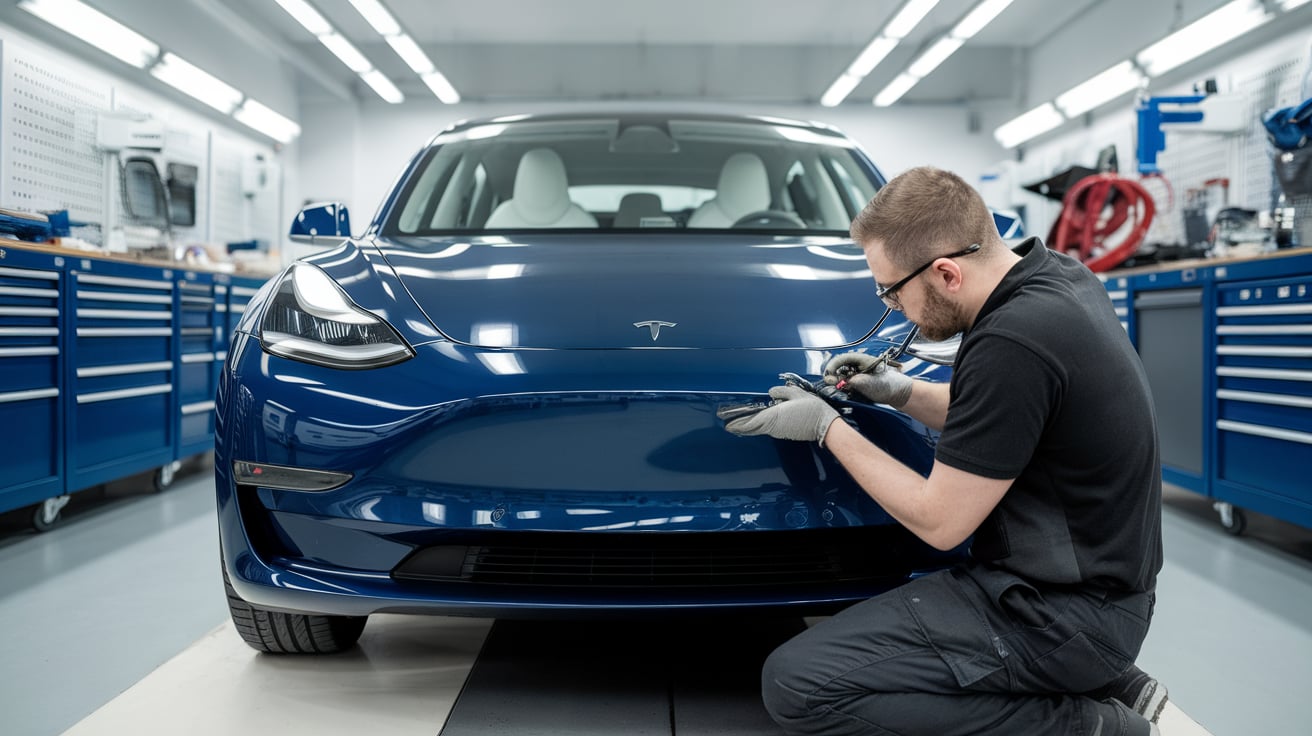Ever walked back to your car and spotted a dent that was not there this morning? Maybe it happened at the mall, maybe in your own building’s tight parking, either way, it stings. You start thinking about repainting, insurance hassles, and losing resale value. But what if paintless dent removal could fix it without touching the paint? In Dubai, where small dings happen more than we care to admit, PDR is quietly becoming the go-to method for smart car owners who want clean panels, without the drama of full bodywork.
What Is Paintless Dent Removal?
Not every dent needs paint and filler. Some just need the right tools and a steady hand; that is where paintless dent removal comes in.
- Paintless dent removal (PDR) is a technique used to fix dents without repainting or sanding the surface.
- Instead of repairing from the outside, technicians access the dent from behind the panel.
- They use tools like metal rods, glue tabs, and light boards to carefully push the metal back into shape.
- The process is ideal when the paint is not cracked or damaged.
- It is commonly used for door dings, hail dents, and minor panel damage.
- Since there’s no filler or color matching, it helps retain the original factory paint.
PDR is faster and more cost-efficient than traditional bodywork. - In a place like Dubai, where heat softens metal slightly, PDR often works even better.
So if the dent is small, the paint is untouched, and you want your car looking sharp again, PDR might be all you need. Instead of repairing from the outside, technicians access the dent from behind the panel. Our Dent Removal Service in Dubai uses the same professional tools and techniques to restore panels without sanding or repainting.”
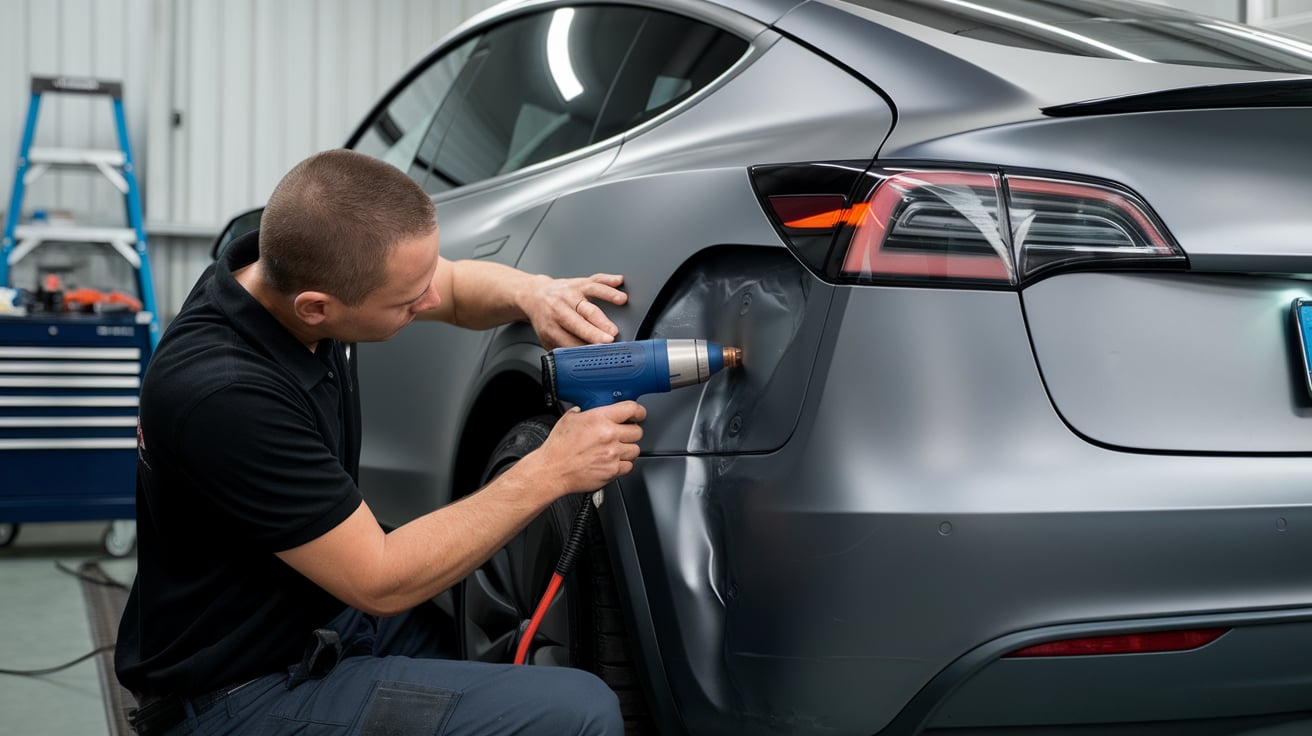
When Should You Consider Paintless Dent Removal?
Not every dent needs a trip to the paint booth. Sometimes, a less invasive fix like paintless dent removal gets the job done faster and cleaner. You might want to consider a dent removal service like PDR when the damage checks the following boxes:
- Minor dents from tight parking mishaps
These usually happen in Dubai’s crowded malls or underground parking areas, quick, shallow hits that do not disturb the paint. - Hail damage on the roof or hood
Occasional hailstorms leave behind multiple small dents. If the surface is not scratched, PDR is usually the best fix. - Door edge dings from neighboring vehicles
Common in narrow spaces where car doors swing a bit too far. These dents are ideal for door ding repair using non-invasive tools. - Body creases with no paint damage
Even slightly deeper dents can be treated, if the paint has not cracked or lifted. Creases are more complex, but still possible with experienced car dent repair technicians.
If the paint is broken or the panel is stretched, traditional dent repair might be the only option and that usually comes with repainting costs, as explained in our blog on Car Scratch Paint Cost.
Types of Dents Paintless Dent Removal Can Fix & Ones It Can’t
Not all dents are equal; some are light bruises, others go deep. The trick is knowing which ones are worth fixing with Paintless Dent Removal (PDR) and which ones need a full body shop intervention.
Dents You Can Usually Fix with Paintless Dent Removal (PDR)
- Door dings from parking lots: These are the most common. Dubai’s tight parking spaces are a dent magnet. If there’s no paint damage, PDR is a fast and affordable solution.
- Hail damage: While not everyday weather in Dubai, hail does hit occasionally. It leaves small dents in clusters, which Paintless Dent Removal handles with precision.
- Creases along the bodyline: More complex than standard dings but still doable. If the panel isn’t stretched and the paint’s still intact, an experienced technician can fix it without filler.
- Shopping cart bumps or minor collision dents: If a cart rolled into your rear door or a bumper tap left a mark, PDR can often reverse the damage without even touching the paint.
Dents That Can’t Be Repaired with PDR
- Deep dents with sharp folds: When the metal is stretched too far or the panel is crushed inward, Paintless Dent Removal will not be enough to restore the shape.
- Chipped or cracked paint: Chipped or cracked paint means PDR becomes off-limits. In such cases, full refinishing or Car Paint Removal may be required before repainting.
- Panel edge dents or close to seams: These areas are harder to access from behind. Even skilled PDR technicians may not be able to reach or shape them without risking panel integrity.
If the paint’s good and the dent is not too deep, Paintless Dent Removal (PDR) gives you a clean fix without sanding or repainting. And when it’s not the right method, a proper check saves you from guessing wrong. Chipped or cracked paint means PDR becomes off-limits. In such cases, full refinishing or Car Paint Removal may be required before repainting.
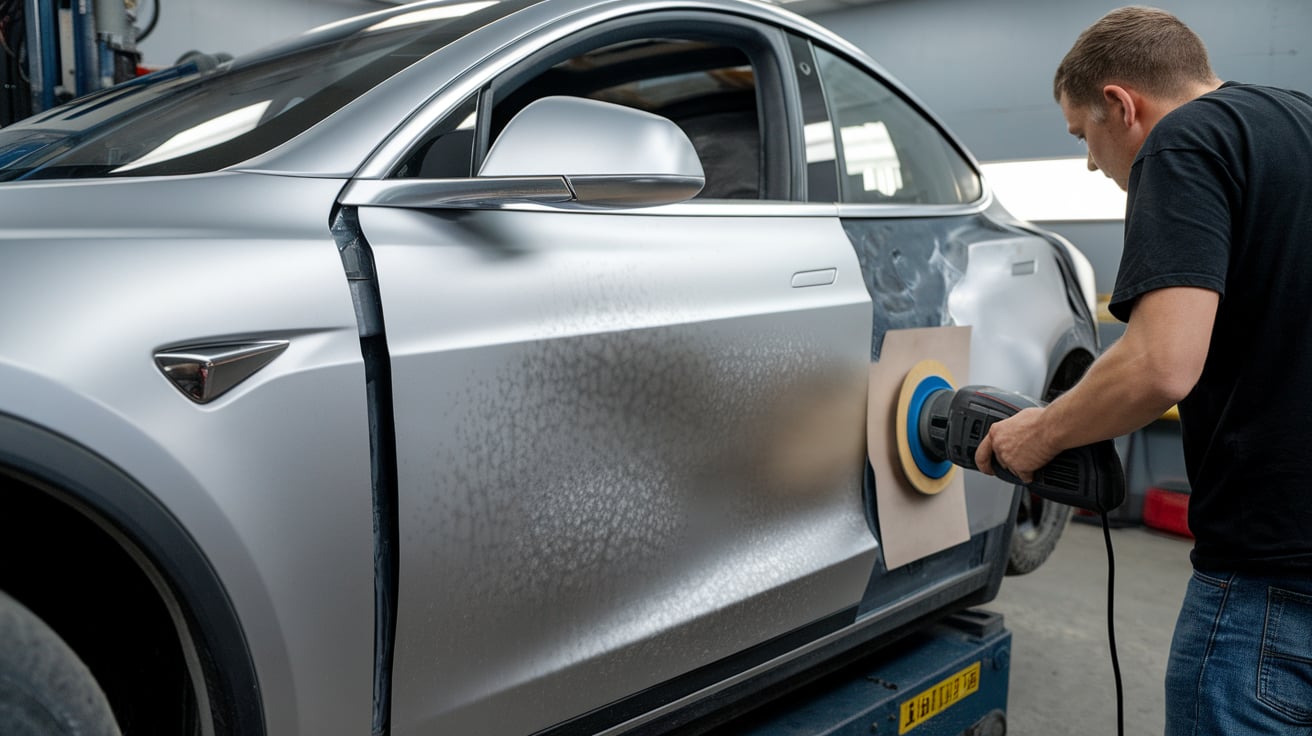
How Paintless Dent Removal Step by Step Works
Have you ever wondered how dents just… disappear without a drop of paint being used? Like, no spray gun, no sanding, no filler, just gone. That’s exactly what happens with Paintless Dent Removal (PDR) when it’s done right. It’s not some YouTube hack with a hairdryer and a toilet plunger. Here’s how pros in Dubai handle it:
-
Stare at the Dent
The first thing a good PDR tech does? They don’t touch anything. They just stare. Sounds strange, but it matters. With the help of LED reflection boards and angled lights, they read the dent’s shape like a map. Is it shallow? Is the paint clean? Is it near an edge? All that decides whether PDR is even possible, or if you’re headed for full panel work.
-
Find a Way Behind the Scenes
Now comes the part that feels like solving a puzzle. They need access behind the dent, without wrecking anything. That means removing trim, unclipping panels, maybe even pulling a tail light. No drilling, no shortcuts. Just a calm, controlled way to get tools exactly where they need to go. If your dent is on a door, expect the window frame to be part of the game.
-
The Gentle Push (or Pull)
Here’s where the skill kicks in. Using metal rods, hook tools, or glue tabs, the dent gets slowly worked out. No hammering. Just gradual pressure from the inside, or a glue pull from the outside. It’s not fast. It’s not flashy. But when done right, the metal starts popping back like it remembered its original shape. This is the part that separates the YouTubers from the real PDR experts.
-
Micro Adjustments & Panel Finishing
Even when the dent is mostly gone, there are always tiny ripples or high spots. That’s where tap-down tools come in. They knock back raised edges, clean up distortions, and smooth out the panel reflection under lights. The goal? Make it look like nothing ever happened. Not even under direct sunlight. Sometimes, a little heat gun is used to help the panel hold its final shape, especially in colder months.
And that’s it. No repaint. No color matching. Just a whole lot of precision and patience. Paintless Dent Removal (PDR) is quiet work, but when you see the before and after, it hits loud.
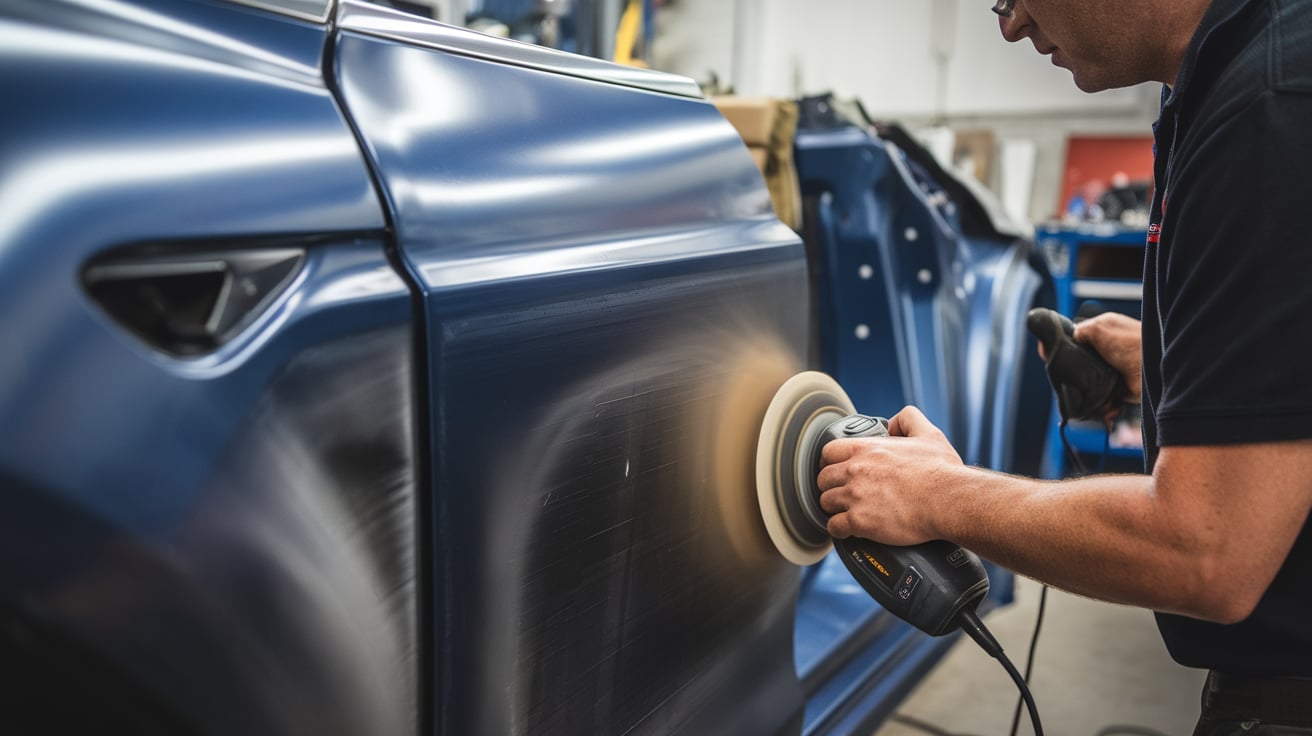
Tools & Tech Used in Paintless Dent Removal
Some people think PDR is just “pushing the dent from the back.” If only it were that simple. Truth is, Paintless Dent Removal relies on some seriously specific gear, and none of it works without human hands that know what they’re doing. Here’s a peek inside a real PDR toolkit, and what each tool actually does:
- PDR rods and hand tools
Think of them like metal chopsticks, long, curved, and strong. They slide behind panels to push the dent out slowly. No banging, no paint cracking, just gentle reshaping, one nudge at a time. - Glue pulling kits
When there’s no way behind the dent, like on a roof or quarter panel, glue pulling comes in. A tab sticks on top of the dent, then it’s pulled outward carefully. If you’re picturing yanking it out like a bottle cap, nope, it’s more like coaxing it back into place. - LED reflection boards
These aren’t just fancy lights. They show you the dent in crazy detail, even things the naked eye misses. If the lines bend? There’s still work to do. - Tap-down tools and hammers
Sometimes, pushing a dent out creates tiny high spots. These tools fix that, just light tapping to flatten things back. It’s more delicate than it sounds. - Heat guns (only when needed)
Not to melt anything, just to soften the panel when the metal’s being stubborn. Dubai’s weather helps in the summer, but in cooler months or shaded workshops, a bit of heat goes a long way.
Without PDR rods, glue pulling kits, and reflection boards, the job can’t be done properly. We’ve broken down these essentials in our blog on Dent Repair Tools.
Why So Many People in Dubai Prefer Paintless Dent Removal
Let’s be honest. No one wants to be without their car for days just because of a small dent. You spot it. You cringe. But then you remember, maybe it doesn’t need repainting after all. That’s where Paintless Dent Removal (PDR) steps in. And for a lot of car owners in Dubai, it just makes more sense.
- The original paint stays untouched
If the finish is fine, why mess with it? No need to repaint or blend colors. - It’s quick, like, really quick
We’ve seen dents sorted in under an hour. Some take longer, sure, but nowhere near a body shop timeline. - You’ll probably spend less
No paint. No materials. Less labor. That translates to lower costs, especially for smaller dents. - No sanding. No color matching. None of that hassle.
This is a clean fix, not a full-on repaint job. You’re skipping the messy stuff. - Better for the environment
No paint fumes, no fillers, no spraying. Just tools and technique. The car looks better, and you don’t leave a chemical footprint behind.
If the paint is still there and the dent is not wild, PDR gives you a fast, clean fix that protects both your car and your wallet.
PDR vs Traditional Dent Repair | A Local Breakdown
Let’s be real. No one wants to leave their car at a shop for days, wait on color-matching, or deal with overspray. But sometimes, that’s the only way. Other times? You might just get away with Paintless Dent Removal (PDR), and that changes everything. Here’s a side-by-side look at PDR vs body shop repair, especially for drivers in Dubai who value time, finish, and cost:
| Aspect | Paintless Dent Removal (PDR) | Traditional Dent Repair |
| Time Taken | 1 to 4 hours | 1 to 3 days |
| Paint Matching | Not required | Required (and often tricky to match) |
| Cost | Lower overall | Higher, due to labor and materials |
| Paint/Panel Damage | None, original finish stays | Often involves sanding, filler, paint |
| Eco-Friendly | Yes, no paint, no chemicals | No, uses paints, thinners, solvents |
In Dubai’s heat and traffic-heavy roads, small dents happen all the time. Choosing the right repair method is not just about budget; it’s about preserving your car’s factory finish and your time.
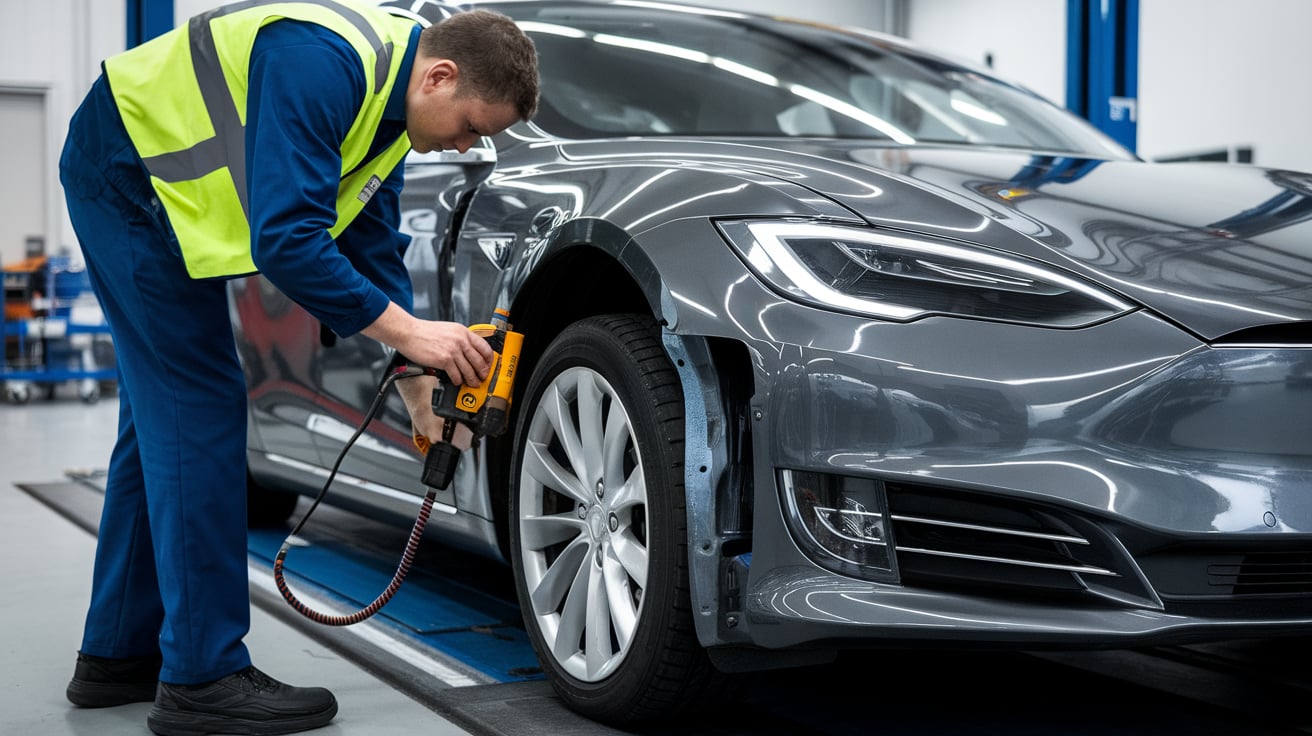
Is PDR Right for Your Car?
So, let’s cut to it. You’ve got a dent. Not a huge mess, but enough to bother you every time you walk past your car. If the paint’s still holding up and the dent is not deep enough to set off your insurance panic mode, then yeah, Paintless Dent Removal (PDR) might be all you need. No respray, no downtime, no filler dust blowing around.
Dubai roads are rough on panels. Between tight parking, mall bumps, and surprise dings, it is no wonder dent repair shops are busy. But not every dent has to turn into a full-blown body job. Sometimes, it just needs a bit of finesse, the kind that drivers trust at Bodyshop Dubai for everyday dents and scratches.
Idea: If you’re not sure whether your dent is a PDR case or not, just ask. A quick check can save you days of shop time and a chunk of cash.
And if it can be done? You’ll walk out with your original paint, your pride intact, and your wallet breathing easier.

